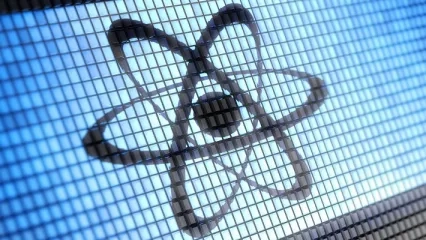Alo Yeditepe
Alo Yeditepe
Targeted Atomic Therapy is Hope for Many Cancers
The process of giving the patient the irradiated iodine atom, known as atomic therapy, has been hopeful for many cancer treatments in recent years. Nuclear Medicine Specialist Prof. Dr. Nalan Alan Selçuk: “Thyroid cancer patients are treated with iodine once over 90 percent of the time. This process contributes to 82% of the treatment in neuroendocrine tumors."
Noting that the incidence of cancer is an increasing health problem, Yeditepe University Koşuyolu Hospital Nuclear Medicine Department Head Prof. Dr. Nalan Alan Selçuk shared important information about 'nuclear medicine treatment methods' and success rates. Stating that atom therapy has been used especially in the treatment of thyroid cancer since the early 1940s, Prof. Dr. Selçuk: "For the last 20 years, we have started to use this treatment widely in tumors originating from intestinal and gastric neurons and nerve cells, which we call prostate cancer and neuroendocrine tumors, and liver tumors."
“These molecules are targeted and find the organ to go to”
Stating that radioactive substances are sent to the body in doses that will not harm the person in atomic treatment, Prof. Dr. Nalan Alan Selçuk said, “One of the treatments we have recently called targeted therapies or smart therapies is atom therapy. These molecules, which are targeted and able to find the organ they will go to, are marked in the nuclear medicine laboratory and given to the patient, usually intravenously. Molecules find the target and enter the cell. Here, they only destroy the tumor tissue. By giving less radiation to other areas of the body, a safer, selective treatment method is provided”.
“First Step is Atomic Therapy in a Large Thyroid Cancer”
Providing information about the types of cancer in which atomic therapy is applied, Prof. Dr. Nalan Alan Selçuk stated the following: “Features such as the size of the tumor, its pathological type, and its spread pattern, such as the presence of lymph node spread in the neck, determine whether the patient will receive atomic therapy or not. What we mean by atomic treatment is 'iodine 131' treatment. Generally, over 90 percent of these patients are treated by taking iodine once. Of course, the amount of tissue left after the surgery, the iodine capture capacity of the thyroid gland, and the type of the disease are the factors that increase the success of the treatment. Pancreatic cancer is known among the people as a rapidly growing and deadly type of cancer. The progression of pancreatic cancer is usually rapid and treatment options are more difficult than normal cell types, but if the pancreatic cell type contains neuroendocrine, these diseases can also be treated. After atomic treatment, we get very satisfactory results in this group. We are talking about tumors of neuroendocrine origin of the pancreas. These tumors most commonly metastasize to the liver. Even in such a situation, it is possible for us to have a chance to treat the patient with smart molecules or to increase the patient's quality of life by stopping the progression of the tumor.”
What If it doesn't Respond to Surgery or Chemotherapy?
Explaining that neuroendocrine cancers are a common tumor of many organs of the body, especially stomach, intestine, pancreas, lung and thyroid, Yeditepe University Hospitals Nuclear Medicine Specialist Prof. Dr. Selçuk stated the following: “We use atomic therapy in these cancers in advanced patients who do not have a chance for surgery or do not respond to chemotherapy, because patients who come to nuclear medicine are now patients in the 3rd and 4th stages of cancer. They are patients who have lost the opportunity of more traditional methods used in cancer treatment, namely surgery, chemotherapy and radiotherapy. Since these patients have come to us in the last stage, their life expectancy is short. Despite this, our goal is to stop these diseases, prolong the life of people and improve their quality of life. It has been demonstrated by current data that neuroendocrine tumors prevent advanced diseases at a rate of 82 percent and contribute to the treatment. These patients come to us with their hopes lost, and despite this, the rates can be satisfactory”.
About
Faculty and Year of Graduation:
İstanbul University Cerrahpaşa Medical Faculty, 1996
”
See Also
- Radioembolization in Liver Tumor Treatment
- Diagnosis of Heart and Brain Diseases with PET CT
- Atomic Therapy (Radioactive Iodine Therapy)
- Therapies Applied in Nuclear Medicine
- Theragnostic Approach in Cancer Treatment
- Nuclear Medicine Diagnosis and Imaging
- Molecular Imaging and Treatment in Prostate Cancer
- Lutetium Treatment in Neuroendocrine Tumors
Alo Yeditepe




